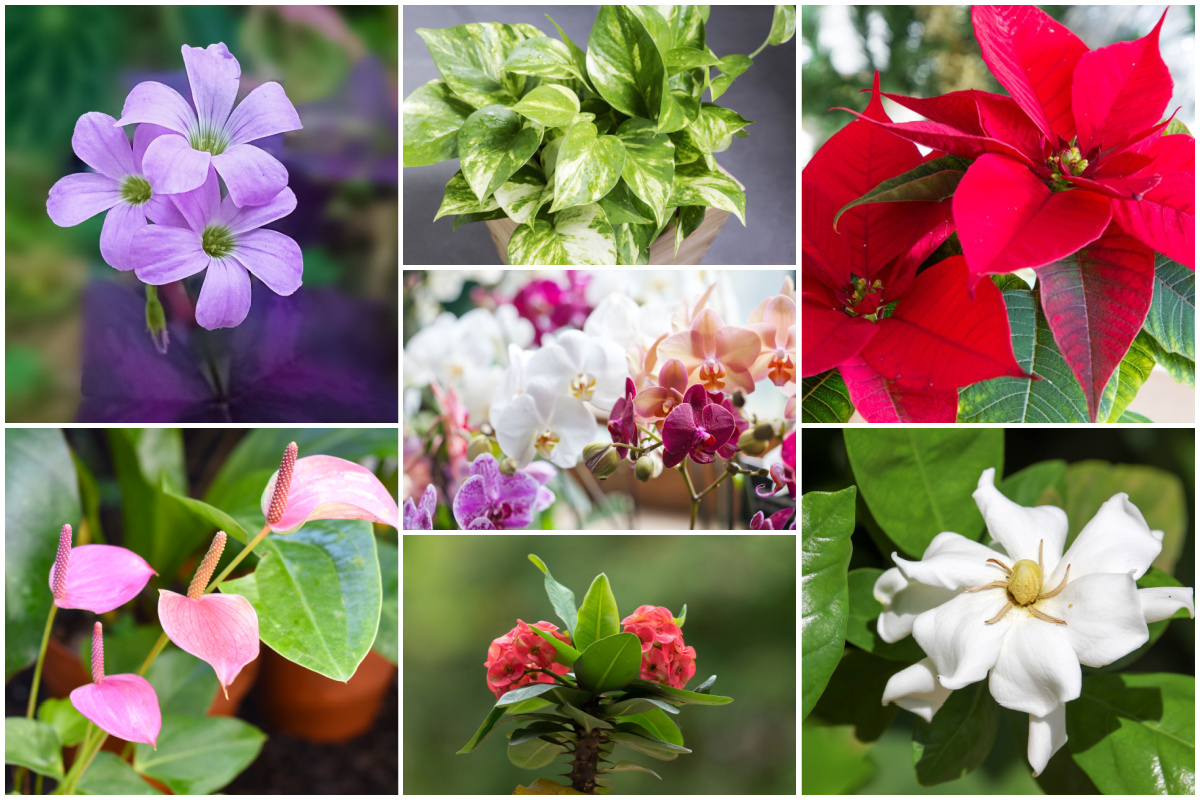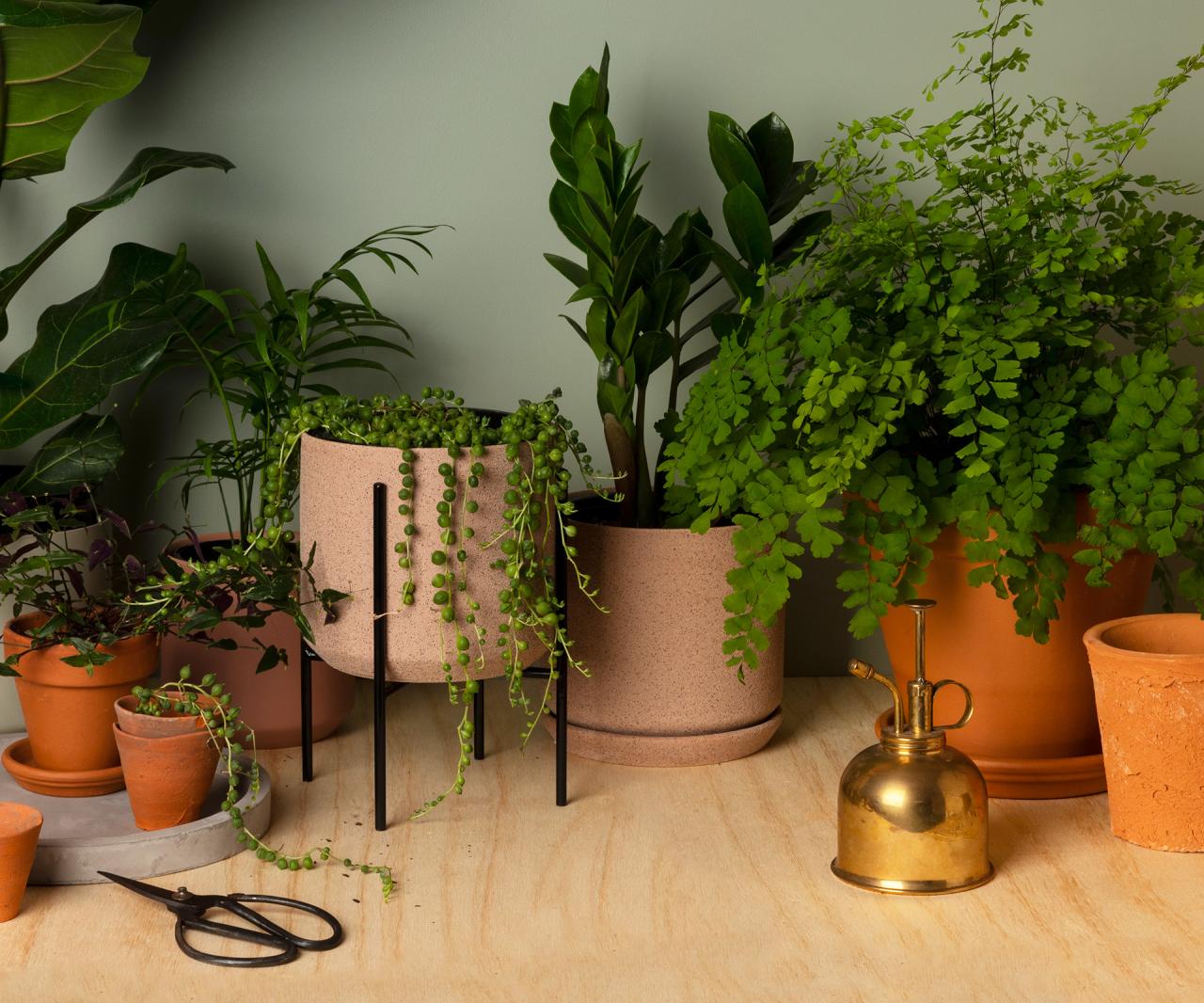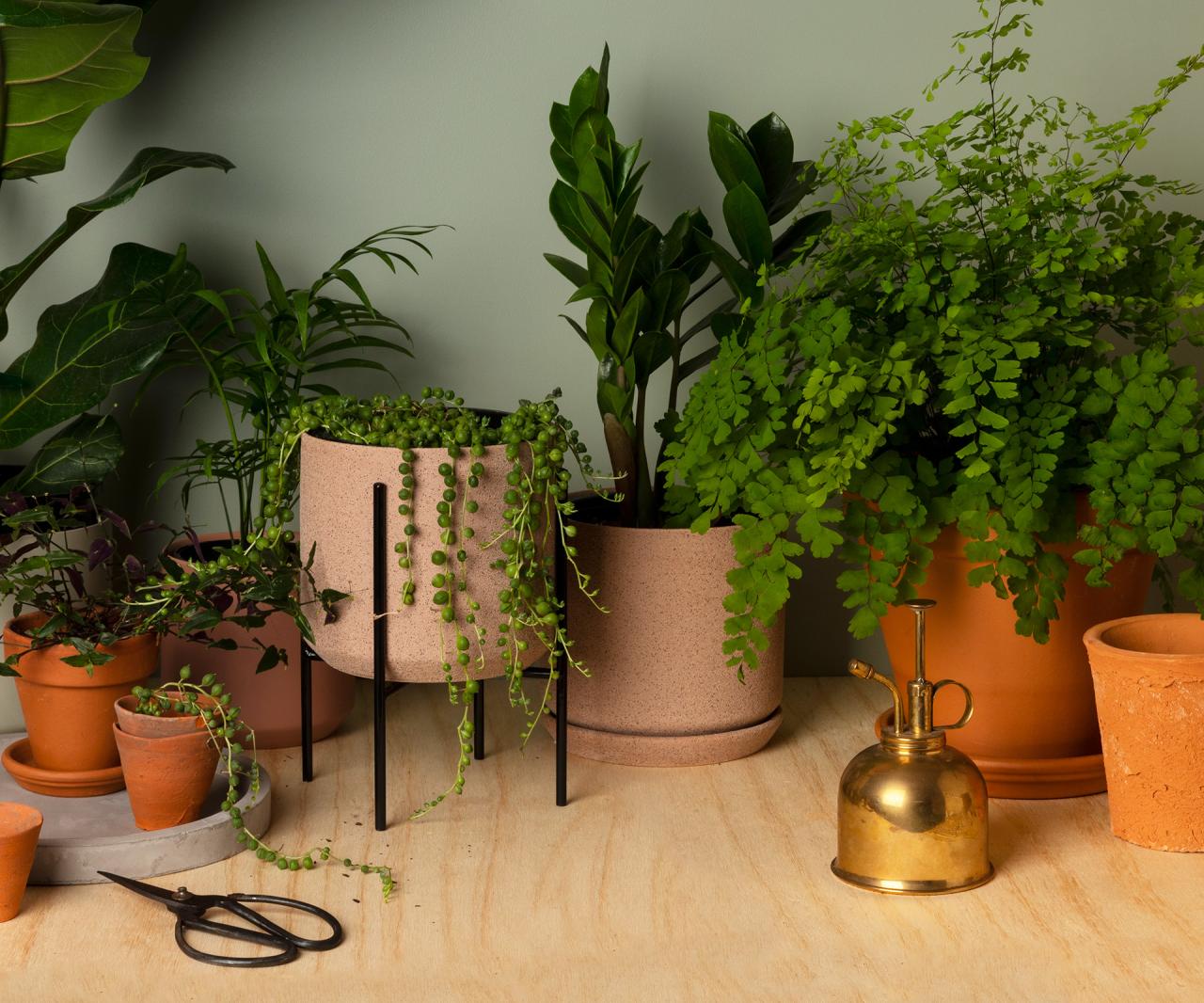Best Indoor Houseplants for First-Time Gardeners sets the stage for this enthralling narrative, offering readers a glimpse into a world where verdant life thrives within the confines of their homes. Bringing nature indoors is not just a trend; it’s a lifestyle choice that enriches our lives with a touch of tranquility and natural beauty.
For those new to the world of plant care, the prospect of nurturing a living organism can seem daunting. But fear not, as this guide will equip you with the knowledge and confidence to successfully cultivate a thriving indoor garden, even if you’ve never touched a trowel before.
This comprehensive guide will introduce you to a selection of easy-to-care-for houseplants that are perfect for beginners. We’ll explore their unique characteristics, care requirements, and the benefits they offer, ensuring your indoor oasis flourishes with vibrant greenery. From understanding basic plant needs to navigating common challenges, this guide will provide you with the essential tools to become a successful indoor gardener.
Easy-to-Care-For Indoor Plants
For first-time gardeners, choosing the right indoor plants can be a daunting task. Many fear they lack the green thumb needed to keep their plants thriving. Fortunately, several indoor plants are incredibly resilient and require minimal care, making them perfect for beginners.
These plants are known for their ability to tolerate a range of conditions, making them suitable for various environments. They also offer several benefits, from purifying the air to enhancing the aesthetic appeal of your home.
Easy-to-Care-For Indoor Plants
These plants are known for their hardiness and ability to thrive in a variety of indoor conditions, making them ideal for beginner gardeners.
Plant Name |
Image Description |
Care Requirements |
Benefits |
|---|---|---|---|
Snake Plant (Sansevieria trifasciata) |
The snake plant is characterized by its upright, sword-like leaves, often with a dark green color and yellow margins. |
Water sparingly, allowing the soil to dry out completely between waterings. Prefers bright, indirect light but can tolerate low light conditions. Soil should be well-draining. |
Highly effective air purifier, removing toxins such as formaldehyde and benzene. Low maintenance and can tolerate neglect. Adds a modern, minimalist touch to any space. |
ZZ Plant (Zamioculcas zamiifolia) |
The ZZ plant features glossy, dark green leaves that grow in clusters from a thick, underground rhizome. It has a distinctive, almost sculptural appearance. |
Very drought tolerant, only needing water when the soil is completely dry. Prefers bright, indirect light but can tolerate low light conditions. Soil should be well-draining. |
Exceptional air purifier, removing toxins such as toluene and xylene. Can tolerate low light and infrequent watering. Adds a touch of tropical elegance to any room. |
Pothos (Epipremnum aureum) |
Pothos is known for its trailing vines with heart-shaped leaves that can be solid green, variegated with yellow, or even white. |
Water when the top inch of soil is dry. Prefers bright, indirect light but can tolerate low light conditions. Soil should be well-draining. |
Excellent air purifier, removing toxins such as formaldehyde and carbon monoxide. Easy to propagate, making it simple to start new plants. Adds a touch of greenery and life to any space. |
Cast Iron Plant (Aspidistra elatior) |
The cast iron plant features dark green, oval-shaped leaves that grow directly from the ground. It is known for its resilience and ability to tolerate harsh conditions. |
Water when the top inch of soil is dry, but can tolerate some dryness. Prefers low to medium light conditions, but can tolerate some shade. Soil should be well-draining. |
Highly tolerant of neglect and can thrive in low light and infrequent watering. Excellent air purifier, removing toxins such as formaldehyde and xylene. Adds a touch of greenery and texture to any room. |
Common Mistakes to Avoid
Bringing a plant home is exciting, but it’s essential to understand common mistakes first-time gardeners make to ensure their plant’s survival. These mistakes can often be avoided with a little knowledge and care.
Overwatering
Overwatering is one of the most common reasons indoor plants die. When the soil is constantly wet, it suffocates the roots, preventing them from absorbing essential nutrients and water.
- Allow the soil to dry out slightly between waterings.Check the soil moisture by inserting your finger a few inches into the soil. If it feels dry, it’s time to water.
- Use pots with drainage holesto allow excess water to escape.
- Avoid letting plants sit in waterafter watering. Empty any excess water from the saucer or pot tray.
Underwatering
While overwatering is a common issue, underwatering can also be detrimental to plant health. Plants need water to thrive, and if they don’t get enough, they will start to wilt and eventually die.
- Check the soil moisture regularly.If it feels dry to the touch, water the plant thoroughly.
- Consider using a moisture meterto measure the soil moisture level accurately.
- Don’t wait for the plant to show signs of wiltingbefore watering. By this point, the plant may already be stressed.
Incorrect Lighting, Best Indoor Houseplants for First-Time Gardeners
Different plants have different light requirements. Some plants need bright, direct sunlight, while others prefer indirect light. Providing the wrong amount of light can cause your plant to become leggy, pale, or even die.
- Research the light requirements of your plantbefore bringing it home.
- Observe the plant’s growth. If it starts to become leggy or pale, it may not be getting enough light. If it shows signs of browning or wilting, it may be getting too much light.
- Consider using a grow lightif you don’t have enough natural light in your home.
Not Repotting
Plants need room to grow. If they are kept in the same pot for too long, they will become root-bound and will eventually die.
- Repot your plants when they outgrow their pots. This typically happens every 1-2 years for most plants.
- Choose a pot that is only slightly largerthan the previous pot. Too large a pot can lead to overwatering.
- Use fresh potting mixwhen repotting your plants.
Neglecting Pests and Diseases
Pests and diseases can quickly damage your plants. Early detection and treatment are essential to prevent further damage.
- Inspect your plants regularlyfor signs of pests or diseases.
- Isolate any infected plantsimmediately to prevent the spread of pests or diseases.
- Use appropriate pest control methods. This may include using insecticidal soap, neem oil, or other organic solutions.
Creating the Right Environment

Just like any living being, indoor plants need the right conditions to thrive. Providing them with the proper environment is crucial for their health and longevity. This involves understanding their needs for light, temperature, humidity, and air circulation.
Light
The amount of light your plant receives directly impacts its growth and overall health. Different plants have varying light requirements, ranging from bright, direct sunlight to low, indirect light. Understanding your plant’s specific needs is essential.
- Bright, Direct Sunlight:Plants like succulents, cacti, and some flowering plants need at least six hours of direct sunlight daily. These plants thrive in south-facing windows where they receive the most sunlight.
- Medium Light:Many popular houseplants, such as snake plants, ZZ plants, and peace lilies, prefer bright, indirect light. This means they should be placed near a window but not in direct sunlight.
- Low Light:Plants like ferns, pothos, and cast iron plants can tolerate low light conditions. These plants can thrive in rooms with limited natural light.
Temperature
Most indoor plants prefer moderate temperatures, similar to those comfortable for humans.
- Ideal Range:The ideal temperature range for most houseplants is between 65°F and 75°F (18°C and 24°C).
- Avoid Extremes:Sudden temperature changes or exposure to drafts can stress your plants. It’s important to keep them away from heat sources like radiators or cold windows.
Humidity
Humidity refers to the amount of moisture in the air. Many tropical plants, such as orchids, ferns, and peace lilies, thrive in humid environments.
- Increasing Humidity:To increase humidity, you can use a humidifier, place plants on pebble trays filled with water, or group plants together to create a microclimate.
- Signs of Low Humidity:Brown leaf tips, wilting, and leaf drop can indicate low humidity.
Air Circulation
Good air circulation is essential for preventing diseases and promoting healthy growth.
- Importance of Air Movement:Air movement helps to prevent fungal diseases and ensures proper gas exchange, allowing plants to breathe.
- Creating Air Circulation:You can create air circulation by opening windows, using fans, or simply moving plants around the room.
Troubleshooting Common Plant Problems: Best Indoor Houseplants For First-Time Gardeners

Even the most resilient houseplants can encounter issues. Identifying and addressing these problems early can help prevent serious damage and ensure your plants thrive.
For first-time gardeners, low-maintenance houseplants are essential, and certain varieties can thrive even in dimly lit corners. If you’re seeking a touch of the eerie, consider adding plants with dark foliage or unusual textures, like the striking black mondo grass or the dramatic, spider-like ferns.
For more inspiration, explore a guide to Best Plants for a Dark and Mysterious Halloween Look to find plants that evoke a spooky yet stylish ambiance. Once you’ve mastered these low-light beauties, you can venture into the world of brighter blooms and more complex care routines.
Common Plant Problems and Solutions
Here’s a breakdown of common plant problems, their causes, and solutions:
Problem |
Cause |
Solution |
|---|---|---|
Wilting |
Underwatering, root rot, pests, or environmental stress |
Check the soil moisture. If dry, water thoroughly. If the soil is constantly wet, repot the plant with fresh, well-draining soil. Inspect for pests and address them accordingly. Ensure proper light and temperature conditions. |
Yellowing Leaves |
Overwatering, underwatering, nutrient deficiencies, or pests |
Adjust watering frequency based on soil moisture. Ensure adequate drainage. Use a balanced fertilizer according to the plant’s needs. Inspect for pests and address them promptly. |
Brown Leaf Tips |
Low humidity, overwatering, or mineral buildup |
Increase humidity around the plant by using a humidifier or placing a tray of water nearby. Adjust watering frequency and ensure proper drainage. Flush the soil with water to remove excess minerals. |
Leaf Drop |
Sudden changes in temperature, light, or humidity, or stress from pests or diseases |
Provide consistent conditions and avoid sudden changes in environment. Inspect for pests and diseases and address them accordingly. |
Pests |
Infestation from insects or mites |
Identify the specific pest and use appropriate treatment methods. This may involve insecticidal soap, neem oil, or other natural remedies. |
Diseases |
Fungal, bacterial, or viral infections |
Isolate infected plants and remove affected parts. Use a fungicide or bactericide if necessary. Ensure proper ventilation and avoid overwatering. |
Resources for Further Learning
The journey of indoor gardening is an ongoing learning experience. As you become more familiar with your plants, you’ll likely want to expand your knowledge and explore new species. Fortunately, there are numerous resources available to support your green thumb journey.
Online Resources
The internet offers a wealth of information for indoor plant enthusiasts. Websites, blogs, and online communities provide valuable insights, tips, and support.
For those new to indoor gardening, selecting the right plants can make all the difference. Low-maintenance options like snake plants and ZZ plants are great starting points. But if you’re looking for a more festive touch, consider incorporating these hardy plants into your spooky decor.
For inspiration on how to create a truly haunting indoor garden, check out our guide on How to Create a Hauntingly Beautiful Indoor Garden for Halloween. Once you’ve mastered the basics, you can expand your collection with more challenging plants, but for now, these beginner-friendly options are sure to thrive even in the hands of a novice gardener.
- The Spruce: This website offers comprehensive guides on various aspects of indoor gardening, including plant care, troubleshooting, and design inspiration.
- Gardenista: Known for its beautiful photography and curated content, Gardenista provides stylish and informative articles on indoor plants and their care.
- Reddit’s r/houseplants: A vibrant online community where plant lovers share their experiences, ask questions, and exchange advice.
- YouTube Channels: Numerous YouTube channels, such as “Epic Gardening” and “Plant Daddy,” offer video tutorials and demonstrations on plant care and propagation.
Books
Books offer a more in-depth and comprehensive approach to indoor gardening, providing detailed information on plant species, care techniques, and troubleshooting.
- “The Indoor Plant Bible” by Tovah Martin: A comprehensive guide covering a wide range of indoor plants, their care requirements, and propagation techniques.
- “Houseplants: The Complete Guide to Choosing, Growing, and Caring for Indoor Plants” by D.G. Hessayon: This book provides practical advice on selecting, caring for, and troubleshooting common houseplants.
- “The Plant Lady: A Beginner’s Guide to Indoor Plants” by Michael Perry: This book offers a friendly and accessible approach to indoor gardening, ideal for beginners.
Local Resources
Connecting with local resources can provide valuable support and guidance.
- Local Garden Centers: Often staffed by knowledgeable professionals who can answer your questions and offer advice on plant selection and care.
- Plant Societies and Clubs: Joining local plant societies or clubs allows you to connect with fellow enthusiasts, attend workshops, and learn from experienced gardeners.
Final Review
Embarking on your indoor gardening journey with these easy-to-care-for houseplants is a rewarding experience. As you witness their growth and vitality, you’ll gain a deeper appreciation for the natural world and discover a newfound sense of accomplishment. Remember, patience and consistent care are key to nurturing healthy and thriving plants.
So, choose your favorites, create a welcoming environment, and enjoy the beauty and tranquility that indoor plants bring to your life.
FAQ Summary
What are the best indoor plants for beginners who have low light conditions?
Snake plants, ZZ plants, and cast iron plants are excellent choices for low-light environments. They can tolerate minimal sunlight and are known for their resilience.
How often should I water my indoor plants?
Watering frequency varies depending on the plant species, pot size, and environmental conditions. A general rule of thumb is to water when the top inch of soil feels dry to the touch.
What are some signs that my plant is not getting enough light?
Signs of insufficient light include pale leaves, stunted growth, and leaf drop. If you notice these symptoms, consider moving your plant to a brighter location.
